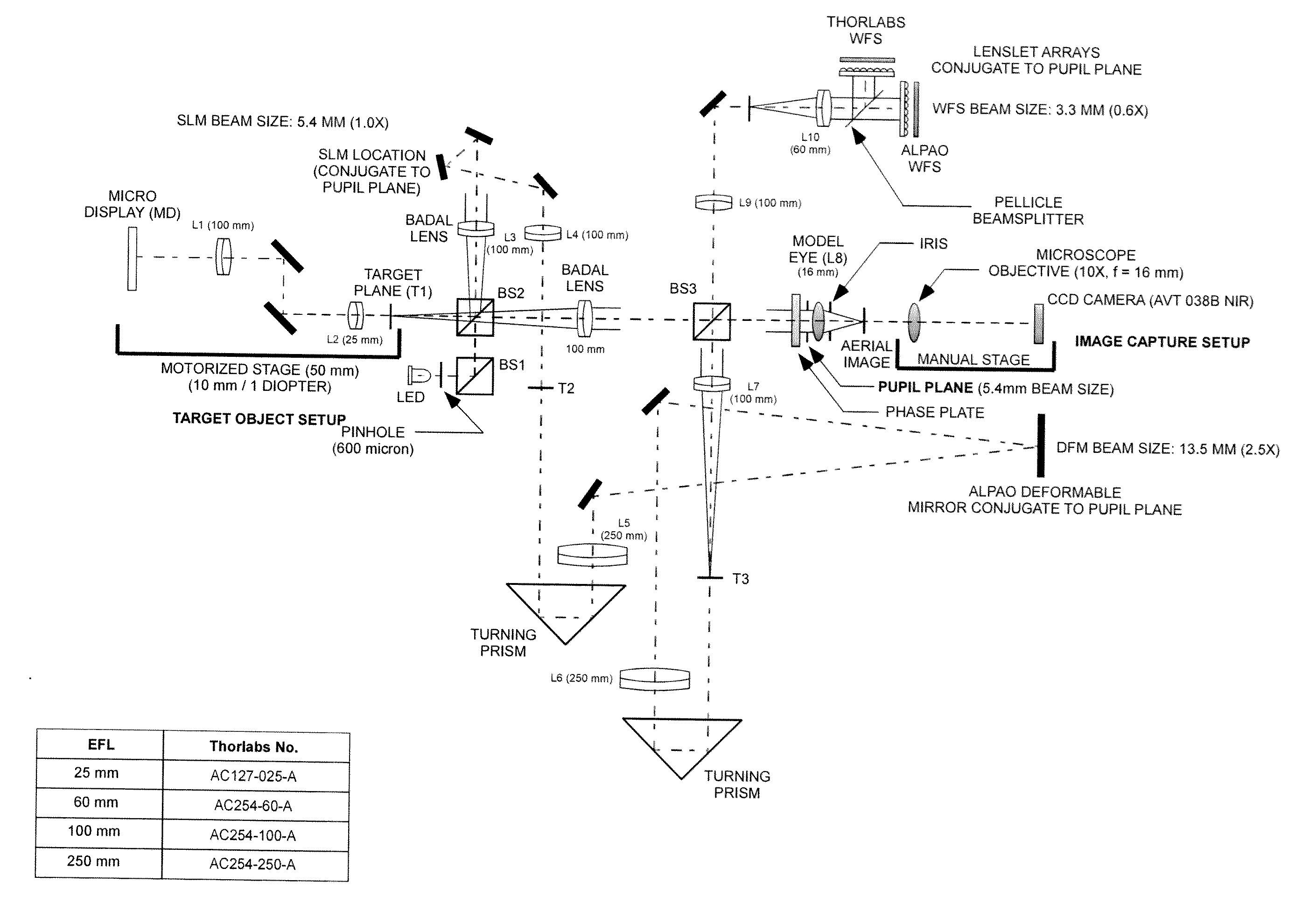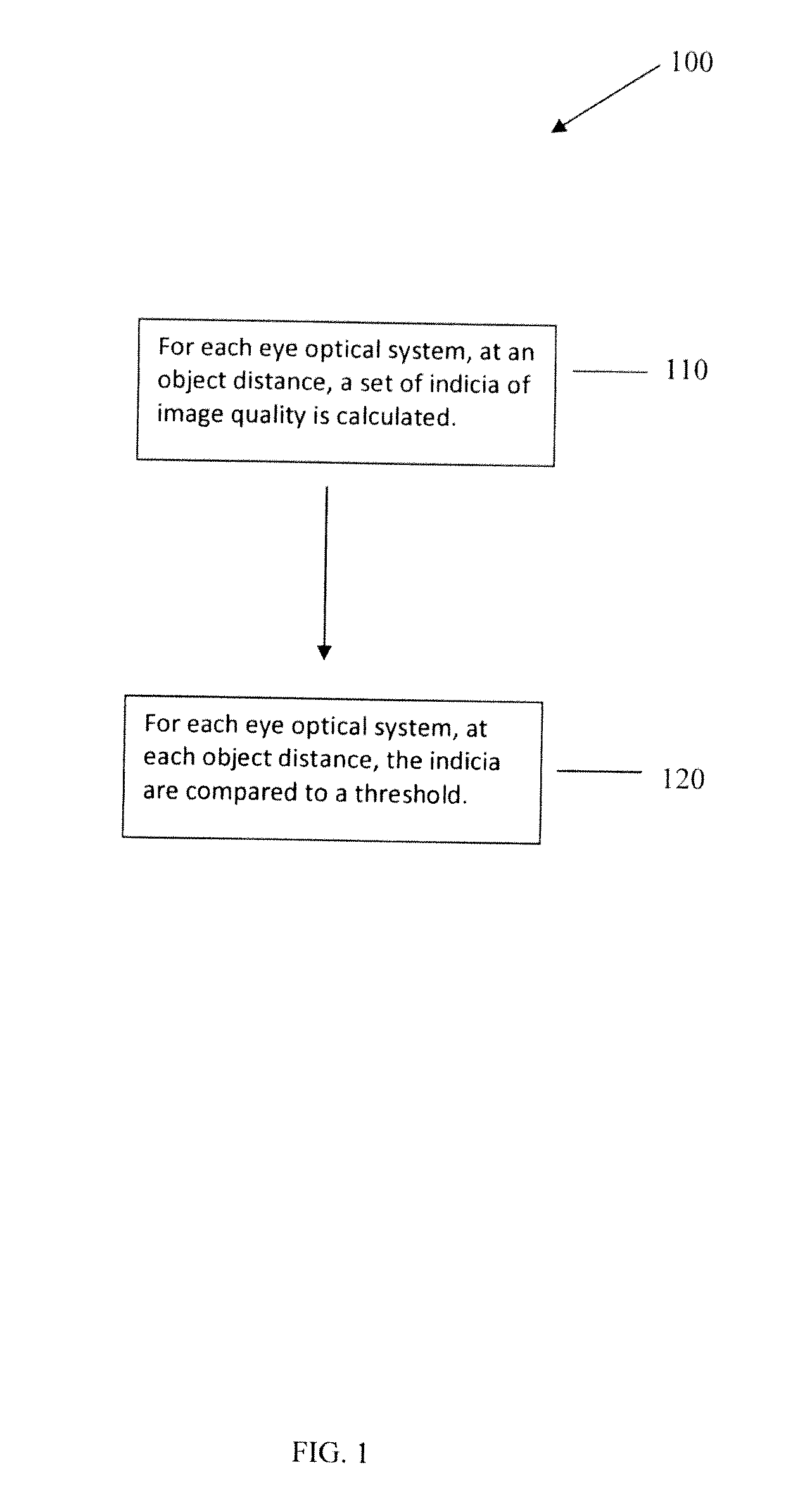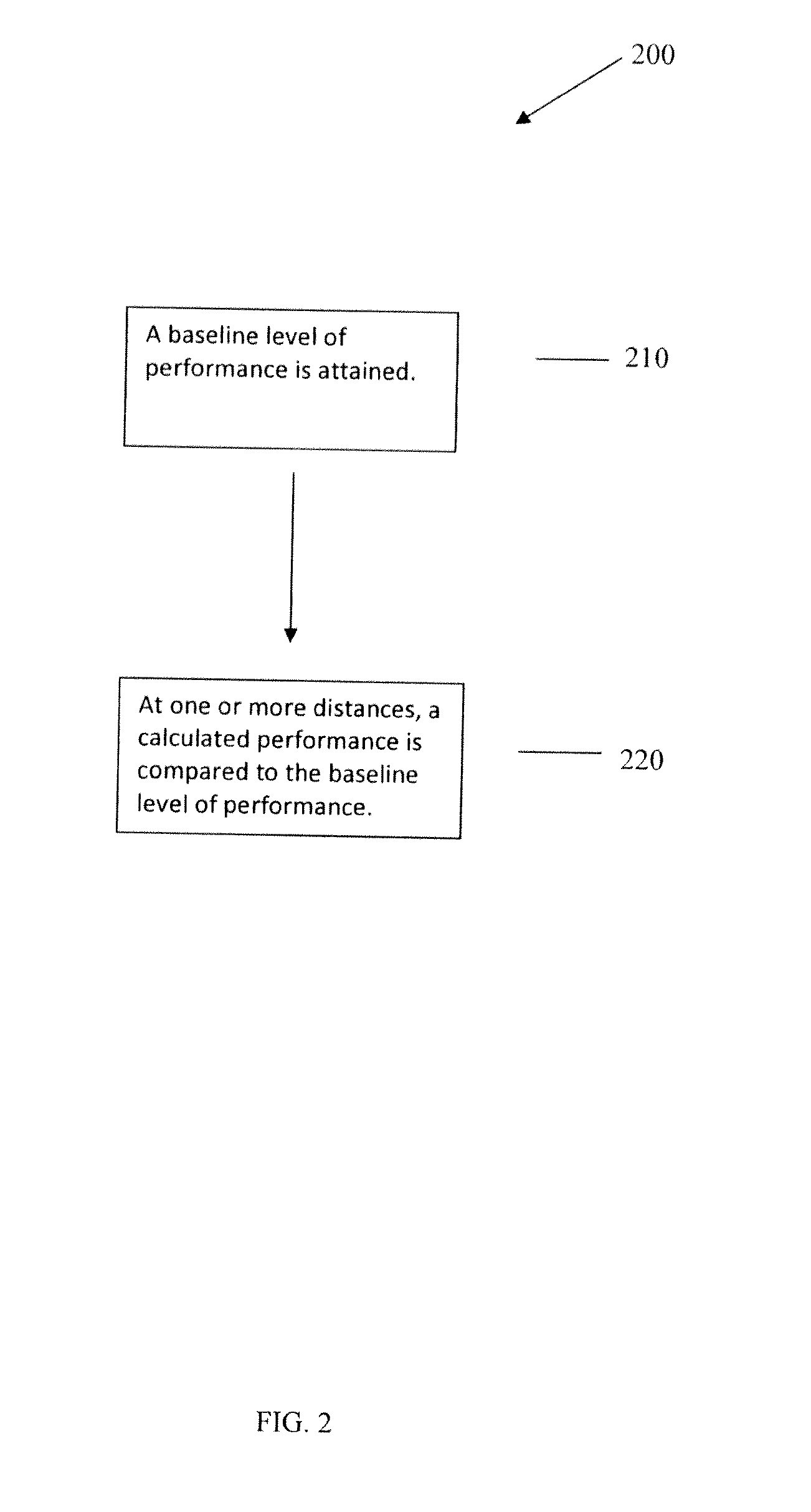Use of an optical system simulating behavior of human eye to generate retinal images and an image quality metric to evaluate same
an optical system and human eye technology, applied in the field of human eye simulating behavior to generate retinal images, can solve the problems of expensive and time-consuming research and clinical studies of ophthalmic lenses and other ophthalmic corrections
- Summary
- Abstract
- Description
- Claims
- Application Information
AI Technical Summary
Benefits of technology
Problems solved by technology
Method used
Image
Examples
Embodiment Construction
[0010]The term “ophthalmic optical correction” refers to an ophthalmic lens used with an eye, an optical feature of an eye that has been refractively corrected or other ophthalmically modified features of an eye optical system. For example, an optical feature of an eye that has been refractively corrected may include a crystalline lens or cornea that has been reshaped or otherwise optically modified using a mechanical or optical technique (e.g., LASIK or change of index of refraction).
[0011]The term “ophthalmic lens” refers to any artificial lens for use with an eye (e.g., a spectacle, a contact lens, an intraocular lens, a corneal inlay or a corneal onlay). An ophthalmic lens may comprise one or more optical elements. An ophthalmic lens may be multifocal or single vision. An ophthalmic lens may be refractive and / or diffractive. An ophthalmic lens may be monofocal or multifocal (e.g., bifocal or trifocal).
[0012]The term “population of eye optical systems” is used herein to refer to ...
PUM
 Login to View More
Login to View More Abstract
Description
Claims
Application Information
 Login to View More
Login to View More - R&D
- Intellectual Property
- Life Sciences
- Materials
- Tech Scout
- Unparalleled Data Quality
- Higher Quality Content
- 60% Fewer Hallucinations
Browse by: Latest US Patents, China's latest patents, Technical Efficacy Thesaurus, Application Domain, Technology Topic, Popular Technical Reports.
© 2025 PatSnap. All rights reserved.Legal|Privacy policy|Modern Slavery Act Transparency Statement|Sitemap|About US| Contact US: help@patsnap.com



